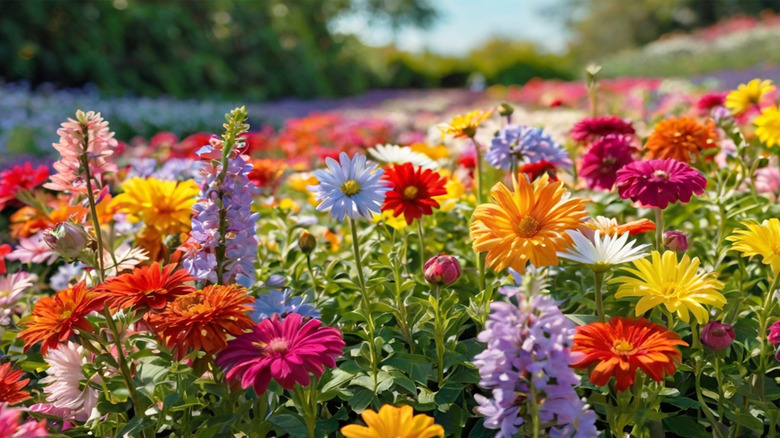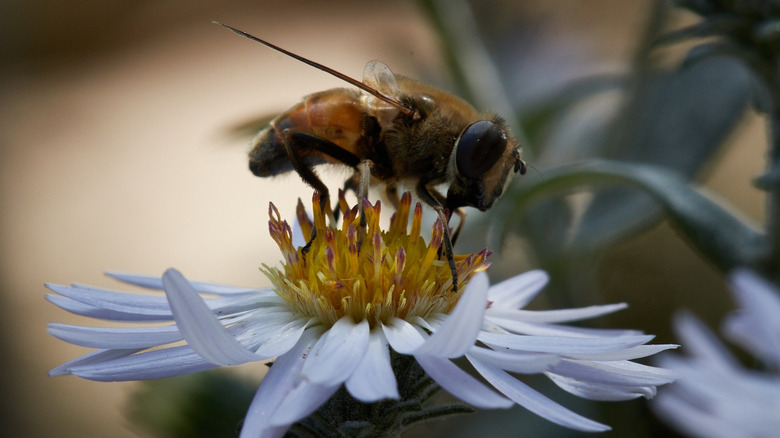The Vibrant Perennial Flower That's A Must-Plant For Attracting Birds And Pollinators
New York asters (Symphyotrichum novi-belgii) are an excellent choice if you're starting a pollinator garden. Asters are native to eastern North America and native birds and pollinators find them a good source of food in late summer and early fall, when much of their food supply is starting to dwindle. Also known as Michaelmas daisies, New York asters are a tall variety of asters that can bloom for up to six weeks. Even after pollinators have drained all the nectar out of the plant, their seed heads can keep feeding birds into the winter.
You'll also love them for brightening up your garden with daisy-shaped flowers that pair well with autumn's orange, brown, and yellow tree foliage. Native asters primarily come in shades of violet, but cultivars can extend their color range to white, pink, and red. As fall bloomers, New York asters make a great native alternative to non-native chrysanthemums. They also make great cut flowers.
Growing up to 5 feet high, they are great for prairie gardens and back-of-the-border locations as well. This popular plant has many shorter cultivars, such as the ironically named 'Mount Everest,' which grows to 3 feet. Even shorter are the 18-inch 'Nesthäkchen,' 'Professor Kippenberg,' a 12-inch variety, and dwarf varieties such as the diminutive 3-inch 'Winston Churchill.'
How to plant and maintain New York asters
Hardy in USDA zones 4 to 8, New York asters have been in North America far longer than New York has been a state, so they are well-adapted to its growing conditions and require minimal maintenance. They will grow in shadier locations, but for abundant flowers, plant them in an area that gets at least six hours of sun daily.
To bring more birds and pollinators to your garden, plant your asters near shrubs or trees so that birds can flit from branch to plant and back again as they feed, and reduce or eliminate your use of herbicides and pesticides, neither of which New York asters need to flourish. The tallest plants may need staking to stay upright. Cut the dead stems back to the ground only after the birds have picked the seed heads clean, usually in late winter.
New York asters can be subject to powdery mildew. To prevent this fungal disease in the first place, make sure your asters get plenty of sun and divide the clusters every two or three years to encourage air circulation. Water the plants at the roots rather than overhead, as mildew loves moisture. If you see signs of infection, remove infected plants to prevent the spread of their fungal spores, and place the diseased plants in your garbage bin rather than composting them. Powdery mildew won't kill the plants, so removing affected ones is far better for plants, birds, and pollinators than using fungicides. If you do use a fungicide, be sure to follow the directions on the package. For more info on caring for these perennial flowers, check out our guide to growing asters.

